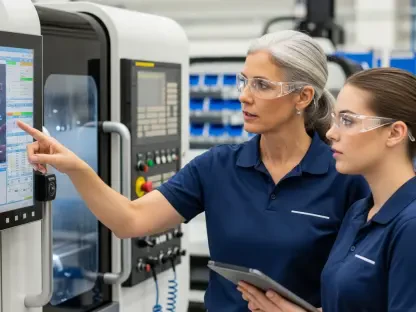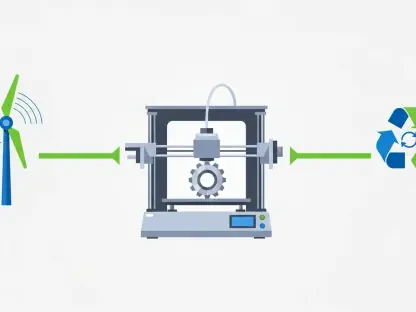The development and manufacturing of Drug-Device Combination Products (DDCPs) have evolved significantly over the past two decades. From the early days of prefilled syringes to the more complex delivery systems like autoinjectors and dual chamber systems, the journey has been marked by numerous challenges and advancements. The advent of HUMIRA (adalimumab) in a single-dose prefilled syringe (PFS) in 2003 was a groundbreaking moment in the administration of biologics. This innovation enabled patients to self-administer medications that previously required professional healthcare assistance. This development set the stage for a wide array of DDCP technologies aimed at enhancing patient autonomy, reducing dosing errors, and improving compliance.
Evolution of Drug-Device Combination Products
The term DDCP now encompasses products that combine drugs with compatible medical devices. The most common examples today are prefilled syringes (PFS) and autoinjectors, which have become integral in minimizing dosing errors and enhancing patient adherence. This combination approach extends the lifecycle management of biological drugs, adding significant value by improving the user experience and ensuring that patients consistently adhere to their prescribed therapies. However, the production of DDCPs is far more complex than traditional pharmaceuticals, involving intricate processes that span from initial design to final packaging.
As the market for biologics has grown, so too has the sophistication of delivery systems. The transition from simple prefilled syringes to advanced autoinjectors reflects a broader emphasis on user-friendly designs. This evolution illustrates the necessity of integrating drug stability and device functionality, requiring a multi-disciplinary approach that addresses both pharmaceutical and engineering challenges. The overarching goal remains the same: to deliver safe, effective, and easy-to-use combination products that can significantly enhance patient outcomes.
The Role of CDMOs in DDCP Development
To navigate the complexities of DDCP production, many pharmaceutical companies have turned to experienced Contract Development and Manufacturing Organizations (CDMOs). These organizations provide the specialized expertise and infrastructure needed to manage the intricate processes involved. Among the leading CDMOs, WuXi Biologics stands out for its comprehensive service spectrum, encompassing everything from initial development stages to final manufacturing. Such CDMOs collaborate with top medical device vendors worldwide to develop and manufacture both manual and safety PFS and autoinjectors, managing numerous projects and producing millions of units annually.
A proficient CDMO plays a crucial role in overcoming the technical hurdles associated with DDCPs. For instance, they bring valuable insights into regulatory submissions, risk management, and quality assurance, ensuring that the products meet stringent global standards. Collaboration with a capable CDMO can significantly reduce development timelines, streamline production processes, and facilitate a smoother pathway to market. The expertise of these organizations is paramount, particularly as the drive for rapid market entry pressures biopharma companies to optimize efficiency without compromising on quality or compliance.
Design and Development Challenges
Developing a DDCP requires a fresh approach, often described as learning a new language due to the differing terminologies and expectations between drug manufacturers and medical device manufacturers. This gap can lead to misunderstandings, such as the definition of “package,” which in the context of DDCPs might encompass the entire medical device and not just the drug container. Navigating this language barrier and aligning the objectives of pharmaceutical and device development teams is one of the initial yet significant hurdles in DDCP development.
CDMOs play a vital role in bridging this gap by providing expertise in both areas, ensuring that the final product meets all necessary criteria for safety, efficacy, and usability. For example, they evaluate formulations to optimize the design of the DDCP for enhanced drug delivery and user experience. Balancing factors such as drug stability, device material compatibility, and ergonomic considerations can dictate the success or failure of a combination product. Hence, meticulous design and iterative testing are essential to align the pharmaceutical properties with the mechanical functionalities of the device.
Formulation and Device Compatibility
Higher concentration formulations pose unique challenges in DDCP development, often requiring specific design adaptations to ensure optimal performance. For instance, these formulations might exhibit tendencies for aggregation, increased viscosity, and changes in pH or excipient concentrations, which can affect the injectability and overall performance of the device. Adjusting needle length or diameter, as well as optimizing the syringe’s shape and size, can significantly reduce injection force, enhance tissue penetration, and improve drug delivery consistency, thereby addressing these challenges effectively.
Research conducted by scientists at WuXi Biologics underscores the impact of various factors on the injectability of a DDCP, such as drug viscosity, syringe characteristics, friction force inside the syringe, and counterpressure from body tissues. Comprehensive studies and rigorous testing protocols are integral to developing DDCPs that are not only functional but also user-friendly. Ensuring that the combination product operates effectively under real-world conditions is paramount, as it directly influences patient adherence and therapeutic outcomes.
Emerging Technologies in DDCPs
The DDCP landscape continues to evolve with emerging technologies such as dual chamber systems for lyophilized products. These innovative systems typically comprise two chambers separated by a rubber stopper, with one containing a sterile diluent and the other housing a lyophilized tablet of the active biologic drug. This setup aids in the reconstitution and mixing of the product, simplifying the preparation process for the user and ensuring accurate and consistent dosing. The adoption of such advanced systems reflects the ongoing efforts to enhance convenience and usability for patients.
Pharmaceutical companies often encounter specific challenges that can be mitigated through optimal DDCP design and development, and this is where experienced CDMOs play a pivotal role. For instance, WuXi Biologics offers expert guidance in selecting the appropriate components and technologies that lead to desired DDCP features such as ease of use, enhanced drug delivery, and improved patient compliance. The development of these advanced systems requires close collaboration between drug developers, device engineers, and CDMO partners to ensure that all aspects are seamlessly integrated.
Quality and Regulatory Compliance
Quality system expectations and rigorous risk management activities are critical components of DDCP development, designed to ensure product safety, efficacy, and usability. This comprehensive approach necessitates extensive testing throughout the entire product lifecycle, encompassing stages such as design and development, manufacturing, transportation, and storage. Maintaining integrity in factors like the container closure system is crucial to preserve sterility and prevent contamination. These stringent requirements underscore the need for robust quality control measures and adherence to international regulatory standards.
Testing must also account for potential extractables and leachables, along with thorough evaluations of incoming materials and their compatibility with drug products. In the case of prefilled syringes, ensuring that the delivery force aligns with user capabilities is essential. Furthermore, monitoring the movement of silicone oil, which is crucial for the plunger’s functionality, is necessary to prevent complications that may arise due to storage-induced migration and interaction with the drug product. Comprehensive testing protocols are necessary to address these multifaceted challenges and uphold high product standards.
Manufacturing and Packaging Considerations
In manufacturing, upholding stringent quality and regulatory compliance is essential to ensure that DDCPs meet the highest standards of precision, durability, and accuracy. Adherence to Good Manufacturing Practices (GMP) is fundamental in mitigating risks such as microbial contamination and ensuring that the products are safe and effective for patient use. Controls over aspects like fill weight and plunger insertion depth are standard practices, implemented to maintain consistent product quality and mitigate potential issues during the production process.
Specific labeling and packaging requirements, which are often dictated by regulatory standards and market needs, can be efficiently managed by capable CDMOs. These organizations provide the flexibility to meet diverse customer requirements, ensuring that the final product adheres to all necessary guidelines and is ready for market distribution. The regulatory landscape for DDCPs demands compliance with guidelines from bodies such as the FDA and ISO standards. A robust design control system ensures that all processes meet the required standards, with comprehensive documentation collected and reviewed throughout the product lifecycle.
The Future of DDCPs
Over the past two decades, the development and production of Drug-Device Combination Products (DDCPs) have advanced significantly. Originally starting with prefilled syringes, the industry has now expanded to include more sophisticated delivery mechanisms, such as autoinjectors and dual chamber systems. A pivotal moment in this evolution was the introduction of HUMIRA (adalimumab) in a single-dose prefilled syringe (PFS) in 2003. This innovation represented a major breakthrough in the administration of biologics, as it allowed patients to self-administer medication that previously required the assistance of healthcare professionals. This development paved the way for a variety of DDCP technologies designed to enhance patient independence, minimize dosing errors, and boost compliance.
As these technologies continue to evolve, they aim to make treatments more accessible and user-friendly, ultimately improving the quality of life for patients with chronic conditions. The advancements in DDCPs not only reflect technological progress but also demonstrate a growing emphasis on patient empowerment and safety in medical treatments. This ongoing journey highlights the importance of innovation in the healthcare industry, continually pushing the boundaries to better meet patient needs.









